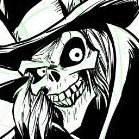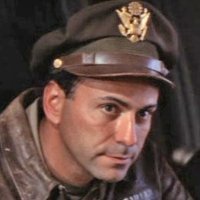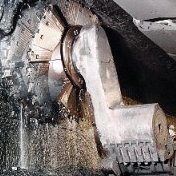-
Posts
100 -
Joined
-
Last visited
About Dave T Brown
- Birthday 05/17/1966
Profile Information
-
Gender
Male
-
Location
Nth Yorks, Great Britain
Recent Profile Visitors
2,229 profile views
-
 Dave T Brown reacted to a post in a topic:
Spectacular footage from the end of the war (190,P-47,Ju-87) in colour
Dave T Brown reacted to a post in a topic:
Spectacular footage from the end of the war (190,P-47,Ju-87) in colour
-
 Dave T Brown reacted to a post in a topic:
Tamiya spare / replacement parts
Dave T Brown reacted to a post in a topic:
Tamiya spare / replacement parts
-
 Dave T Brown reacted to a post in a topic:
What do YOU think?
Dave T Brown reacted to a post in a topic:
What do YOU think?
-
 Dave T Brown reacted to a post in a topic:
ICM Hs-123
Dave T Brown reacted to a post in a topic:
ICM Hs-123
-
 Dave T Brown reacted to a post in a topic:
Suggestion of 1:32 Sunderland and Halifax from HK Models
Dave T Brown reacted to a post in a topic:
Suggestion of 1:32 Sunderland and Halifax from HK Models
-
 Royboy reacted to a post in a topic:
Suggestion of 1:32 Sunderland and Halifax from HK Models
Royboy reacted to a post in a topic:
Suggestion of 1:32 Sunderland and Halifax from HK Models
-
 Tony T reacted to a post in a topic:
Suggestion of 1:32 Sunderland and Halifax from HK Models
Tony T reacted to a post in a topic:
Suggestion of 1:32 Sunderland and Halifax from HK Models
-
 CRAZY IVAN5 reacted to a post in a topic:
Suggestion of 1:32 Sunderland and Halifax from HK Models
CRAZY IVAN5 reacted to a post in a topic:
Suggestion of 1:32 Sunderland and Halifax from HK Models
-
 europapete reacted to a post in a topic:
Suggestion of 1:32 Sunderland and Halifax from HK Models
europapete reacted to a post in a topic:
Suggestion of 1:32 Sunderland and Halifax from HK Models
-
 Shoggz reacted to a post in a topic:
Suggestion of 1:32 Sunderland and Halifax from HK Models
Shoggz reacted to a post in a topic:
Suggestion of 1:32 Sunderland and Halifax from HK Models
-
 Archimedes reacted to a post in a topic:
Suggestion of 1:32 Sunderland and Halifax from HK Models
Archimedes reacted to a post in a topic:
Suggestion of 1:32 Sunderland and Halifax from HK Models
-
 thierry laurent reacted to a post in a topic:
Suggestion of 1:32 Sunderland and Halifax from HK Models
thierry laurent reacted to a post in a topic:
Suggestion of 1:32 Sunderland and Halifax from HK Models
-
Suggestion of 1:32 Sunderland and Halifax from HK Models
Dave T Brown replied to Tony T's topic in LSP Discussion
A 1/32 Halifax B.Mk III, B. Mk.VI or B. Mk VII would be a dream come true for me. Just think of all the 4 Group coloured fin markings aswell as some of the fantastic BIG nose art found on 6 Group Canadian Halifax's. With 6,178 of all marks being built and opereted by the R.A.F., R.A.A.F,. R.C.A.F. and the Free French in Bomber command, not to mention Transport and Coastal Commands, a kit of the Halifax must surely have international appeal. I live in hope. -
 Dave T Brown reacted to a post in a topic:
Suggestion of 1:32 Sunderland and Halifax from HK Models
Dave T Brown reacted to a post in a topic:
Suggestion of 1:32 Sunderland and Halifax from HK Models
-
 Dave T Brown reacted to a post in a topic:
Great price for Hong Kong Models B-17F
Dave T Brown reacted to a post in a topic:
Great price for Hong Kong Models B-17F
-
 Dave T Brown reacted to a post in a topic:
B-24 decal set interest....
Dave T Brown reacted to a post in a topic:
B-24 decal set interest....
-
Dave T Brown started following B-24 decal set interest....
-
 Dave T Brown reacted to a post in a topic:
Thunder Models will release clark tractor and bomb trailer in 1/32
Dave T Brown reacted to a post in a topic:
Thunder Models will release clark tractor and bomb trailer in 1/32
-
 Dave T Brown reacted to a post in a topic:
Thunder Models will release clark tractor and bomb trailer in 1/32
Dave T Brown reacted to a post in a topic:
Thunder Models will release clark tractor and bomb trailer in 1/32
-
I hope this question hasn't been asked before but thinking about, it it probably has so I apologise in advance. Is anyone aware of how I can get hold of Tamiya replacement parts? I've managed to knock over a bottle of mekpac (liquid cement) and you've guessed it, it's destroyed the transparencies of the 1/32 Mosquito FB VI I was building. Beginners mistake made by a relatively experienced modeller!
-
Dave T Brown changed their profile photo
-
 Uncarina reacted to a post in a topic:
25th BG XVI Mosquitos. Cameras? and astrodome canopy
Uncarina reacted to a post in a topic:
25th BG XVI Mosquitos. Cameras? and astrodome canopy
-
25th BG XVI Mosquitos. Cameras? and astrodome canopy
Dave T Brown replied to gunner's topic in LSP Discussion
The 25th Bombardment Group (Reconnaissance) was constituted in the days after D-Day and activated in England in August 1944 to carry out photographic and mapping missions over mainland Europe as the Allied armies pushed east. The Group were designated a Bombardment Group but they did not drop bombs. The 25th used P.R. XVI Mosquitos. The P.R. XVI has no capability to drop ordnance in other words is has no bomb release equipment fitted. They were usually fitted with a long range tank in the main portion of the ventral bay (bomb bay). The two forward cameras were mounted in the forward section of the ventral bay just aft of bulkhead 2 directly under the Navigators seat. the P.R. XVI had the ability to carry 3 additional cameras in the rear fuselage 2 vertical and one oblique. There are additional camera control boxes and their associated junction boxes mounted in the nose of the aircraft ( bomb aimers position for want of a better description) If you send me a P.M. I will let you have some information regarding the layout of the nose compartment, long range fuel tank and the various camera mountings from A.P. 2653J Vol1. That's the maintainance manual so to speak for the P.R. XVI Mosquito. Hope this will help. -
 Anthony in NZ reacted to a post in a topic:
Rocket Projectiles for the Mosquito
Anthony in NZ reacted to a post in a topic:
Rocket Projectiles for the Mosquito
-
With any luck Bob at MDC will be releasing 1/32 Mossie rocket rail mounting stubs, possibly with either Mk 1 or Mk III rails. How do I know this? I sent him the patterns to produce them a while ago. We discussed including the 100 gallon tank guard rail which in reality is made of tubes so any etched brass item will just be wrong as it will be flat in section. 100 gallon tanks and 8 x 25lb A.P. rockets where also discussed however I think he just got too busy.
-
 allthumbs reacted to a post in a topic:
Dealing with bad rivets and panel lines?
allthumbs reacted to a post in a topic:
Dealing with bad rivets and panel lines?
-
Dealing with bad rivets and panel lines?
Dave T Brown replied to ChuckT's topic in Construction & Scratch-building
I've just gone through this with Trumpeter's F-105D where the so called rivet's would, in reality be more like 3/4" dia holes ramdomly placed all over the airframe. I've used thin cyano acrylate to fill them, then sand off the excess a few hours later. I worked in stages i.e. fill the holes / spurious panel lines in a specific area, sand, flash with acrylic car primer, fill any remining defects with cyano, sand then flash again. Then on to the next section. It takes quite some time but for me it's worth it. Bare in mind the cyano gets harder the longer you leave it. Good Luck! -
Could do with an RF-101C Voodoo and an A-26K Counter Invader in 1/32. That's my two penneth worth.
-
Most Wanted Poll / Wish List 2022 (and beyond)
Dave T Brown replied to LSP Dan's topic in LSP Discussion
1/32 A-26K Counter Invader. 1/32 RF-101C Voodoo 1/32 Blackburn Buccaneer S.2 1/32 Mosquito B.XVI 1/32 Mosquito N.F. XXX -
It's the Azure Blue underside that is more flakey ie. much more unlikely than the Med Sea Grey in my opinion. It all comes back to SEAC's interprepation of what role the Mosquito FBVI fitted into. If it was classed as a fighter ( which in my mind it was) then the underside colour from 4th April 1944 would certainly be Med Sea Grey. It must be remembered that the Mosquito FBVI replaced the Beaufighter in most Far East Squadrons and nobody questions the Med Sea Grey on the undersides of Beaufighters in SEAC, and the Beaufighter was a heavy fighter. If it was classed as a bomber then no colour is actually specified but it is highly unlikely to be Azure. In most black and white photos Azure Blue appears quite dark, ( I suggest you look at photos of desert camoflaged aircraft to see this) much darker than the lightish blue in the centre of SEAC roundles (which by the way would be slightly different from aircraft to aircraft). Once again it's worth studying photos as one published photo shows HR493 UX-C of 82 Sqn shows the upper surfaces in Dk Green / Dk Earth, the underside colour is slightly lighter than the light blue in the roundel, Med Sea grey I think.
-
When I wrote my book "Mosquito FBVI Airframe, Systems and RAF usage" I tried to get to the bottom of this very question. I have photographs of 82 sqn Mosquito FB VI's in the standard Med Sea Grey / Dark Green (as they left the factory) with SEAC roundles, the white theatre ID bands on the wing, tailplane and fin, aswell as aircraft that are obviously Dark Earth / Dark Green upper surfaces and a light underside colour. It really is a question of finding a photograph and then taking the plunge. Here is the paragraph from the book referring to SEAC aircraft. "This consists of the Temperate Land Scheme of Dark Earth and Dark Green upper surfaces. Definition of the under surface colour used on Mosquito FB VI within S.E.A.C. is open to interpretation, depending upon which duty or type of aircraft the Mosquito FB VI is perceived. Air Force Orders (India) A.F.O. (I.) 69-70 dated 4th April 1944 was issued on the Camouflage Colourings and Markings of Aircraft, part of which states “(ii) All Fighter Aircraft will be camouflaged in accordance with the temperate land scheme as follows:- Upper Surfaces – Dark green and dark earth. Under surfaces – Medium Sea Grey Tactical Markings – Nil Code letters – Sky (iii) Day Bomber Aircraft. Upper surfaces are to have the ‘temperate land' scheme. (iv) Night Bomber Aircraft. Upper surfaces are to have the ‘temperate land' scheme.†The report makes no mention of under surface colour for day or night bomber types. If the Mosquito FB VI is perceived as a “Fighter Aircraft†by HQ Air Forces S.E.Asia then an under surface colour of Medium Sea grey can be definitely defined as medium sea grey. If however the Mosquito FB VI is classed as a “Day Bomber Aircraft†by HQ Air Forces S.E.Asia then the under surface colour, being undefined is open to interpretation. Some sources claim that Mosquito FB VI's received sky blue or azure blue undersides in accordance with a report issued in 1942 which mentions the under surfaces of Day Bombers serving overseas as sky blue or azure blue. Using this as a rule of thumb it would feasible to assume that Liberators, used in the day bomber role by Air Command South East Asia (ACSEA) also had their under surfaces re painted sky blue or azure blue but the scheme for these aircraft is known to be Olive drab upper surfaces and medium grey under surfaces. A report on a tour of S.E.A.C., Sept – Dec 1944 by Mr J. G. Fisher of I.C.I. acting on behalf of Air Ministry DSM throws further light or confusion depending on how it is viewed on the colours applied in theatre. His report states “ Colour schemes in this command are controlled by an Air Force order India, of March 1944, consolidating various other orders on the subject. The main difference from UK practice was the combination on upper surfaces of day fighters and bombers of Dark Green and Dark Earth in place of Dark Green and Ocean Grey. This led, in most cases to complete re – camouflage of upper surfaces, and so long as this colour scheme is operationally necessary there is no avoiding at least overspraying the Ocean Grey with Dark Earth. A more serious general observation arises from the many Grey colours. In some instances it was felt necessary to re – camouflage the undersurface of an aircraft because the shade of Grey was incorrect or had faded.†There is no mention in his report about Azure Blue. Looking at the few photographs of camouflaged Mosquito FB VI's within A.C.S.E.A. the under surfaces appear much lighter than azure blue, I am therefore drawn to the conclusion that they retained the Medium Sea Grey under surface colour in which they where delivered. The speed and cost of the repainting also draws me to this conclusion and I warrant that the only paint the most aircraft received in theatre would be the Dark Earth covering of the Medium Sea Grey on the upper surfaces only. It is also possible to find photographs of Mosquito FB VI aircraft still carrying the original standard night fighter scheme with white SEAC identification bands and SEAC national markings, so a definitive camouflage scheme is impossible to define for this theatre of operations. Due to the accidental loss of Mosquito's in this theatre of operations which has been covered earlier in this book a new scheme of overall Aluminium was introduced in early 1945 for all Mosquito aircraft irrespective of mark or duty. On the 27th January 1945 A.C.S.E.A issued an instruction for all aircraft of Eastern Air Command except four engined bombers and night fighters to carry the identification markings already applied to Thunderbolts with effect from 1st February 1945. The markings consisted of 28 inch bands across the wings, mid way between root and tip, 18 inch bands across the tail surfaces. The 17 inch band applied to the cowling of Thunderbolts was interpreted as painting the spinners on other aircraft types. A note on the accompanying drawing stated “ Stripes and numbers (A) for uncamouflaged aircraft will be Identification Blue ( for camouflaged aircraft white. On February 3rd the Air Ministry urgently telegraphed A.C.S.E.A. to insist “ Stripes should not, repeat not, extend on to the control surfaces†this was to prevent any control balance problems. It is however possible to see Mosquito FB VI aircraft where the bands continue across the rudder. The national markings applied where 32 Inch diameter SEAC roundels on the upper wing surface and fuselage sides and a 24 inch square SEAC fin flash. The roundels are 32 inch Identification Blue outer and 12 inch diameter SEAC “White†inner. SEAC “White†is four parts White to one part Identification Blue. The fin flash is a 12 inch strip of SEAC “White†and a 12 Inch strip of Identification Blue."
-
Rocket armed Mosquitoes- pylon question
Dave T Brown replied to BloorwestSiR's topic in LSP Discussion
Bob MDC is probably not going to thank me for letting you all know that I supplied him all the info to produce the guard rail. If there's enough interest he may well go for it. SORRY BOB!- 60 replies
-
Rocket armed Mosquitoes- pylon question
Dave T Brown replied to BloorwestSiR's topic in LSP Discussion
Mosquito FB VI's have type specific rocket rail mounting stubs. No other Pylon type, as they are refered to on the first post on this thread, will be anything like the ones used on the Mosquito. I'm pretty sure Bob at MDC is in the process of casting some Mosquito specific rocket, rocket rail & mounting stub ( Pylon) sets.- 60 replies
-
Contacted Bob at MDC and will be sending him the masters.
-
I scartchbuilt the mounting stubs for my Mossie FB VI, made a mould and poured some. It is worth noting that the front and rear mounting stubs are different. I'll drop Bob at MDC a line and see if he's interested in producing some from my patterns, that's if I can find them.
-
I've used the MDC Typhoon enhancements in the Revell kit and found them excellent.
-
http://www.largescaleplanes.com/Photostory/DavidBrown/Mossie/mossie.php This is the correct link for those interested in seeing my efforts converting Revell's old Mossie into an FBVI.





